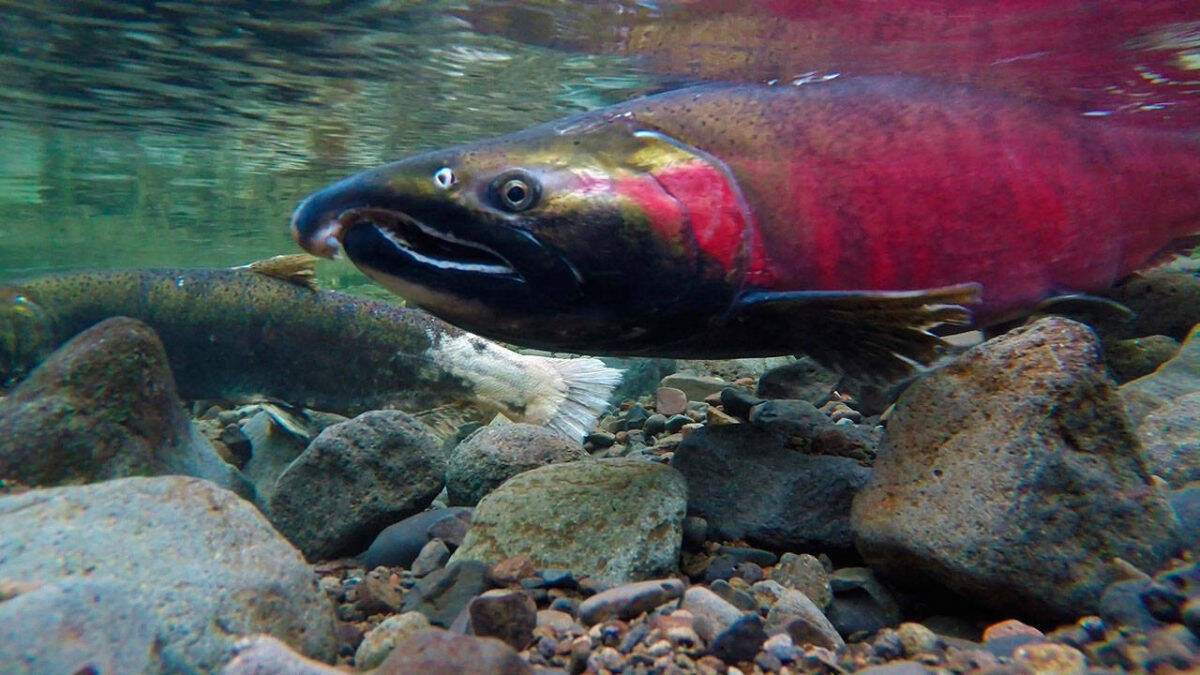Wild Fish Conservancy, a Duvall-based nonprofit, and The Conservation Angler filed suit against the Washington Department of Fish and Wildlife (WDFW), alleging that the agency violated the State Environmental Policy Act.
The nearly 200-page lawsuit, filed Oct. 11 in King County Superior Court, is alleging that the WDFW has been ignoring state environmental laws, and avoiding an environmental impact statement, since 2018, when WDFW commissioners significantly increased its production of hatchery salmon.
“The bottom line is we know hatcheries can cause very serious problems for wild salmon,” said Kurt Beardslee, the executive director of the Wild Fish Conservancy. “It is required that something of that scale of action go through environmental review. The [WDFW] have been circumventing their requirement to a full environmental review, and that’s the premise of this case.”
Washington has the largest system of salmon hatcheries in the world, raising more than 200 million fish at 140 state, federal and tribal facilities — 87 of which are managed by the WDFW. The hatcheries have been used for decades as a way to recover struggling wild salmon populations.
In 2018, the lawsuit alleges WDFW commissioners removed several guidelines from its 2009 Hatchery Reform Policy after facing political opposition, including from commercial fishing industries. The 2009 policy, created by a congressionally funded independent body of scientists, was designed to help recover wild salmon populations while preventing adverse effects to the ecosystem.
Following the 2018 decision, the commission significantly increased the production of salmon coming out of the state’s hatcheries. The given reasons for this increase, according to the lawsuit, was to recover salmon populations and for the Orca Prey Initiative, a plan to generate more Chinook salmon — a primary food source of the sound’s southern resident killer whales.
However, Beardslee and others question the effectiveness hatcheries have on salmon populations and have raised concerns that hatchery fish are overrunning wild populations.
Following the WDFW commission’s 2018 decision, 77 fisheries, scientists and advocates wrote a letter to Gov. Jay Inslee in 2018, criticizing the commission’s decision. In 2019, five former WDFW commissioners also wrote a letter to the state Legislature criticizing the new policy.
A 2020 report from the WDFW Snoqualmie Valley Recordd “A review of Hatchery Reform Science in Washington State” synthesized recent science on salmon hatcheries and found several ecological concerns with hatcheries, including a loss of biodiversity among salmon populations.
While the report did suggest a “strong need for additional research on the economic, social, political, and legal value of hatcheries to help clarify the benefit-risk trade-off,” it also recognized shortcomings with the WDFW’s current system.
“In WDFW’s hatchery system, a focus on efficiency and maximizing abundance prevents widespread implementation of risk reduction measures,” the report states. “Hatcheries have potential for large magnitude ecological impacts on natural populations that are not well understood, not typically evaluated and not measured.”
The report goes on to recommend a more rigorous evaluation of hatchery effects across multiple state programs.
“The department took a big gamble, with the only certain payoff going to Washington’s fishing industry, while all the risks are borne by our orcas and wild salmon populations,” said David Moskowitz, executive director of The Conservation Angler. “But state environmental law does not allow the department to risk the future of our fish and wildlife on such an unproven strategy.”
Beardslee also disputes the idea that hatcheries are helping increase prey for orcas. He said orcas often prefer to eat larger fish, which are difficult for hatcheries to produce.
“Hatchery fish are getting smaller and have a tendency to be smaller than wild fish, and southern resident killer whales prefer large fish that don’t require to constantly be feeding,” Beardslee said. “They can get their caloric intake in a day from small fish, but they could still starve to death because of the energy they expend attempting to capture them.”
In response to the lawsuit, Eryn Couch, a WDFW spokesperson wrote:
“We’re still looking into the details of this particular litigation, but southern resident killer whale recovery is extremely important to us. The state, alongside tribal and federal governments and a broad network of partners, continues to make progress in support of a better future for these endangered whales. We achieve this through a number of ongoing efforts, including restoring habitat, helping to quiet the waters, educating recreational boaters, and working to increase food supply through salmon harvest season setting and salmon hatchery production.”
In a 2021 report from the Governor’s Salmon Recovery Office, salmon populations were described as “teetering on the brink of extinction.” The report states that 10 of the 14 species of salmon and steelhead in Washington, including Puget Sound Chinook Salmon, were listed as threatened or endangered under the federal Endangered Species Act.
“We’re hoping they do a full environmental review,” Beardslee said. “I believe if a full review is done, they will be more protective of wild fish and have more conservative hatchery management than what they’re doing today”.
Editor’s Note: This story was updated to add a comment from the WDFW.


